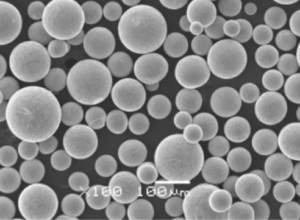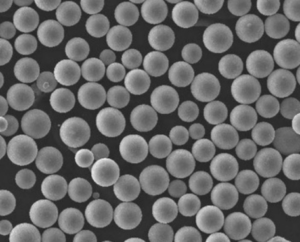革新が絶えず性能の限界を押し広げようとする先端素材の領域で、タングステンとチタンの融合は手強い候補として浮上している。 タングステン・チタン粉この2つの元素の混合物である「チタン合金」は、その卓越した特性と用途によって、あらゆる産業を形作りつつある。この注目すべき合金の世界を掘り下げ、その特性、製造方法、利点、課題、そして将来の潜在的なトレンドを明らかにしていこう。
タングステン・チタン粉末の紹介
タングステンチタン粉末は、しばしばWTi粉末と呼ばれ、タングステンの堅牢性とチタンの汎用性を組み合わせた最先端の合金です。この合金は、耐久性のある高性能材料を求める産業界で大きな注目を集めている特性のユニークな融合を提示します。
特性と応用
タングステンとチタンを理解する
驚異的な密度と強度で知られるタングステンと、軽量で耐食性に優れるチタンの出会い。その結果は?強度、靭性、過酷な条件下での耐性を兼ね備えた合金です。
性能向上のための合金化
タングステンとチタンを合金化する過程で、個々の元素の特性を上回る相乗効果が得られます。この合金は、強化された強度、優れた熱安定性、過酷な環境に耐える能力を提供します。
様々な産業での応用
航空宇宙工学から医療の進歩に至るまで、タングステンチタン粉末は様々な分野でその地位を確立しています。それは、その信頼性とストレス下での性能のために、航空機部品、手術用インプラント、スポーツ用具を製造する上で重要な材料です。
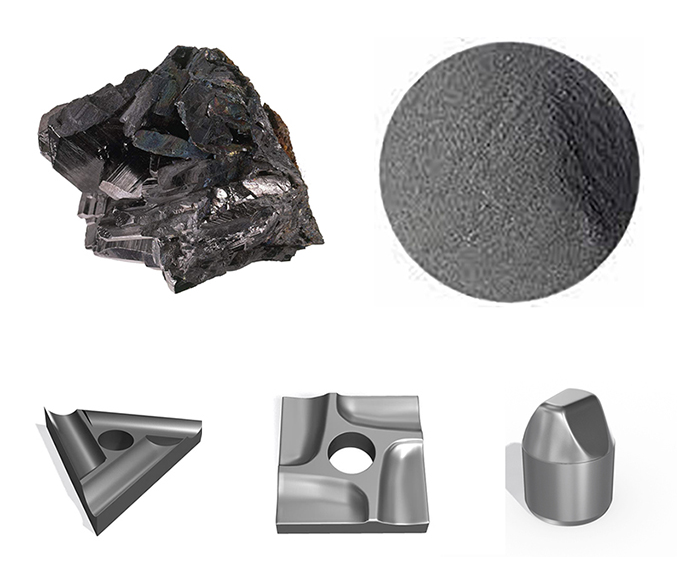
生産と製造
粉末冶金プロセス
タングステン・チタン粉末の製造には、主に粉末冶金技術が用いられます。このプロセスは、それぞれの特性の均一な分布を確保し、ミクロのレベルでタングステンとチタン粒子の正確なブレンドを可能にします。
粒子径コントロール
粒子径は合金の最終特性において極めて重要な役割を果たします。製造業者は、合金の特性を特定の用途に合わせて調整するために、粒子径を綿密に制御しています。
焼結技術
重要なステップである焼結では、ブレンドされた粉末を加熱して固体の合金に融合させます。選択された焼結技術は、合金の密度と機械的特性に大きな影響を与えます。
メリットと利点
高い強度と靭性
タングステンチタン合金固有の強度と靭性は、航空宇宙工学のような極度の応力下での信頼性が要求される場面で非常に貴重なものとなります。
耐食性
この合金の耐腐食性は、その高い強度と相まって、耐久性と長寿命の両方を必要とする用途に適している。
熱安定性
タングステンチタン合金の顕著な熱安定性は、再突入時の高熱にさらされる航空宇宙部品を含む、高温を伴う用途に適しています。
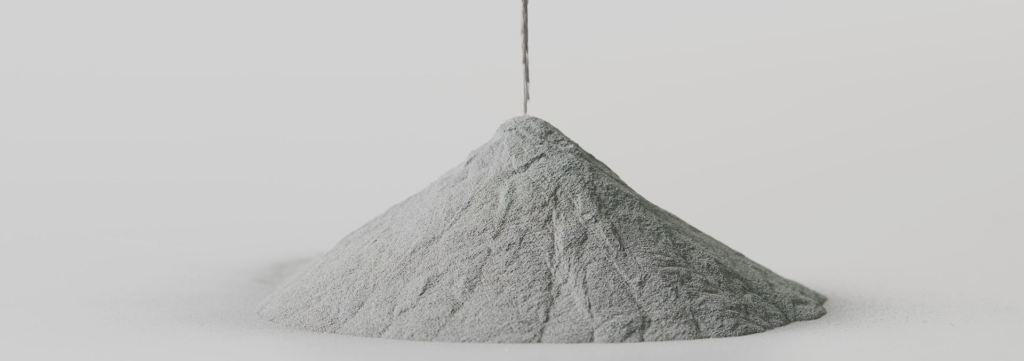
使用上の課題
コスト
タングステンチタン合金は比類のない性能を提供する一方で、その製造コストは、特に予算に敏感なプロジェクトにとっては抑止力になり得ます。
機械加工性の課題
この合金は密度が高く、強度も高いため、有利ではあるが、機械加工や製造工程で問題となることがある。
将来のトレンドとイノベーション
研究開発
継続的な研究により、合金の特性をさらに最適化し、新たな用途を探求することで、能力向上への扉が開かれる。
新たなアプリケーション
産業が進化するにつれ、タングステンチタン粉末の新しい用途が出現し、最先端技術におけるその役割が拡大しています。
環境への影響と持続可能性
リサイクルとリユース
タングステン・チタン合金のリサイクル方法を開発し、持続可能な慣行と整合させ、廃棄物を最小限に抑えるための取り組みが進行中である。
環境に優しい生産方法
研究者たちは、合金のカーボンフットプリントを軽減するため、環境に優しい製造技術を模索している。
他の素材との比較分析
タングステン・チタンと従来の合金との比較
比較分析では、タングステンチタン合金がいかに従来の材料を凌駕し、高度なアプリケーションのための魅力的な選択肢となっているかを紹介しています。
タングステン・チタンと他の先端素材との比較
先端材料の中で、タングステンチタン合金は他の高性能物質に対して独自の優位性を発揮している。
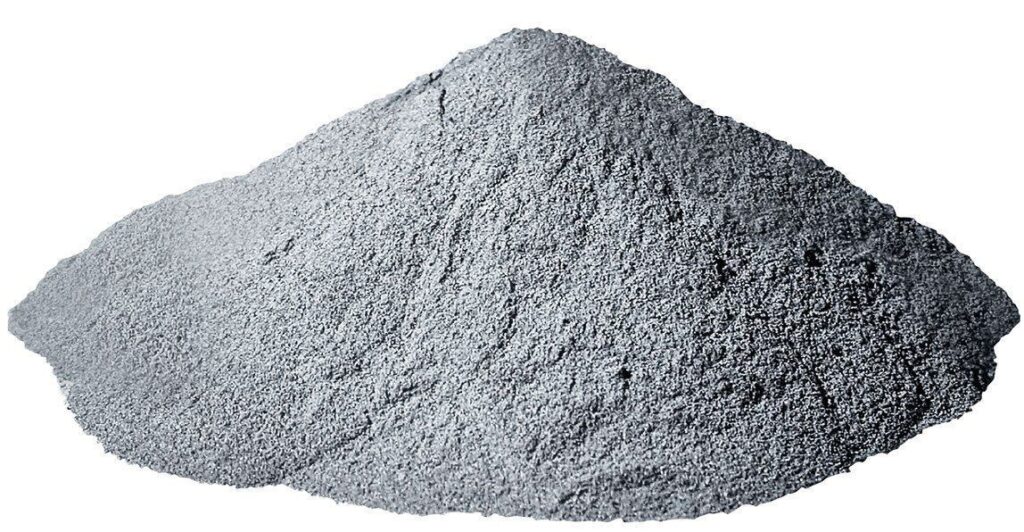
タングステン・チタン粉末の調達方法
信頼できるサプライヤーとメーカー
高品質のタングステンチタン粉を調達するには、実績のある信頼できるサプライヤーやメーカーとの協力が必要です。
品質保証と認証
この合金を調達する際には、適切な認証と業界標準の遵守を通じて品質を確保することが最も重要である。
ケーススタディとサクセスストーリー
航空宇宙産業への応用
タングステン・チタン合金が航空宇宙部品の効率と耐久性の向上に極めて重要な役割を果たした事例を探る。
医療用インプラント
タングステン・チタン合金が生体親和性を高め、医療用インプラントの分野に革命をもたらしたサクセスストーリーを掘り下げる。
専門家の見識と提言
使用方法と利点に関する専門家の意見
業界の専門家は、合金の使用法に関する洞察を提供し、様々な用途におけるその利点を強調する。
注意事項とベストプラクティス
専門家はまた、合金の性能を最適化し、使用時の安全性を確保するための注意事項やベストプラクティスについても共有している。

結論
タングステンチタン粉末は、材料革新の絶え間ない追求の証として立っています。そのユニークな特性のブレンド、多様な分野への応用、そして継続的な研究開発の努力は、変革をもたらす合金としての地位を確固たるものにしています。
よくある質問
タングステン・チタン粉末と他の合金との違いは何ですか?
タングステンチタン粉末は、2つの構成元素に由来する特性のユニークな組み合わせのために際立っています。チタンは合金に軽量の耐食性をもたらしながら、タングステンは、卓越した強度と密度に貢献しています。特性のこのブレンドは、タングステンチタン粉末は、強度、靭性、および極端な条件への耐性のバランスが必要とされるアプリケーションに特に適しています。
タングステン・チタン合金は小規模用途で費用対効果が高いか?
タングステンチタン合金は、その顕著な性能で有名ですが、その生産は、従来の材料に比べて高いコストを伴う可能性があることに注意することが重要です。このコスト要因は、規模の経済のため、小規模なアプリケーションではより顕著になるかもしれません。しかし、耐久性、寿命、応力下での性能という点では、この合金の利点は、特に航空宇宙や医療などの分野の重要な部品では、初期投資を上回ることがよくあります。
タングステン・チタン合金はリサイクルできますか?
はい、タングステン・チタン合金のリサイクル方法の開発に取り組んでいます。リサイクルは環境問題に対処するだけでなく、新しい原材料の入手に関連するコストを軽減するのにも役立ちます。効率的なリサイクルプロセスを確立することで、業界はこの合金の持続可能性を高めると同時に、全体的な環境フットプリントを削減することを目指しています。
タングステン・チタンの加工性は、従来の金属と比べてどうですか?
タングステンチタン合金の高い密度と強度は、特に従来の金属と比較した場合、機械加工性の面で課題をもたらす可能性があります。この合金の靭性と耐性はその密度から来るものであり、機械加工や製作をより複雑なものにする可能性があります。しかし、機械加工技術とテクノロジーの進歩は、様々なアプリケーションのためにタングステンチタン合金を使用して作業することを実現可能にし、プロセスを継続的に改善しています。
この合金の最先端の用途にはどのようなものがありますか?
タングステン・チタン粉末は、新たなテクノロジーにエキサイティングな用途を見出しています。航空宇宙産業では、より効率的で耐久性のある航空機部品の開発に貢献し、航空機の限界を押し広げています。さらに医療分野では、長寿命で拒絶反応のリスクを低減した生体適合性インプラントの製造において、この合金の可能性を目の当たりにしている。研究開発が進むにつれ、新たな用途が出現し、予期せぬ形で産業が形成される可能性が高い。
Additional FAQs on Tungsten Titanium Powder
1) What W–Ti compositions are most common and why?
Typical ranges are 70–95 wt% W with 5–30 wt% Ti. Higher W boosts high-temperature strength, density, and radiation attenuation; higher Ti improves corrosion resistance, weldability, and reduces density. Specialized grades (e.g., W-10Ti, W-20Ti) are chosen per application and processing route.
2) Can tungsten titanium powder be 3D printed?
Yes. LPBF and binder jetting can process WTi powders when PSD is tightly controlled (often D10–D90 ≈ 15–45 μm for LPBF). Preheating, scan-parameter tuning, and post-HIP reduce residual stress and porosity. Binder-jetted parts typically require high-temp vacuum/H2 sintering and may be HIPed for >97% density.
3) How does WTi perform in corrosive or biomedical environments?
Ti additions enhance passivation in chloride-rich and physiological environments versus pure W. However, biocompatibility depends on composition, surface condition, and ion release; medical adoption requires ISO 10993 testing and application-specific validation.
4) What are key machining and finishing strategies for WTi parts?
Use rigid fixturing, PCBN/carbide tooling, generous coolant, and conservative speeds/feeds. For finishing: abrasive flow machining, electropolishing (on Ti-rich surfaces), or chemical-mechanical polishing to reach Ra < 0.2 μm when required.
5) How should tungsten titanium powder be stored and handled safely?
Store dry, inert the headspace if possible, and minimize dust. Use LEV with HEPA, antistatic PPE, grounded equipment, and Class D extinguishers. Follow SDS controls; avoid oxidizers and ignition sources. For AM, control O/N/H to protect mechanical and fatigue properties.
2025 Industry Trends for Tungsten Titanium Powder
- AM-ready feedstocks: Growth of spherical WTi powders with low oxygen (<0.10 wt%) for LPBF and finer cuts for binder jetting with sinter-HIP.
- Thermal management and RF: WTi graded with Cu or Mo interlayers to tailor CTE and thermal conductivity in power electronics and aerospace heat sinks.
- Radiation and high-temp use: Increased evaluation of WTi for x-ray/gamma shielding, plasma-facing components, and hot-structure fasteners where Ti improves toughness vs. refractory W alone.
- Sustainability and traceability: Material passports connecting powder lots to part serials; higher recycled content targets for Ti inputs; closed-loop powder recovery.
- Cost-down: Multi-laser LPBF, sinter-HIP consolidation, and near-net shaping reduce machining of ultra-hard W-rich alloys.
| 2025 Metric (WTi unless noted) | Typical Range/Value | Relevance/Notes | ソース |
|---|---|---|---|
| LPBF relative density (WTi) | 96–99.5% after HIP | Preheat + optimized scans; contour strategies | Peer-reviewed AM studies; OEM app notes |
| Binder-jetted WTi final density | 94–98% (sinter/HIP) | Complex shielding/thermal parts | Vendor case data; journals |
| Tensile strength at RT (W-10–20Ti, HIPed) | 700–1100 MPa | Alloy and porosity dependent | ASM data; literature ranges |
| Thermal conductivity (WTi) | 40–120 W/m·K | Decreases with Ti; design for heat paths | Materials handbooks |
| Oxygen content in AM feedstock | ≤0.05–0.12 wt% | Target to maintain ductility | ISO/ASTM 52907 practices |
| Indicative powder price (spherical WTi) | $80–$180/kg | PSD, sphericity, certification affect price | Market trackers; supplier quotes |
Authoritative references and further reading:
- International Tungsten Industry Association (ITIA): https://www.itia.info
- ASTM/ISO AM standards (ISO/ASTM 52907, 52910): https://www.astm.org and https://www.iso.org
- ASM Handbook (Properties of Refractory and Titanium Alloys): https://www.asminternational.org
- NIST materials data: https://www.nist.gov
Latest Research Cases
Case Study 1: LPBF W-15Ti Heat Sink with Graded WTi–Cu Interface (2025)
Background: A power electronics supplier needed a heat sink with low CTE mismatch to SiC modules and improved thermal cycling durability.
Solution: Printed a W-15Ti core via LPBF using spherical 15–45 μm powder (O ≤0.09 wt%), followed by infiltrated Cu interlayer and HIP; topology-optimized fin geometry.
Results: 22% lower junction temperature at 1 kW load, 3× thermal-cycle life (−40 to 150°C), and 18% mass reduction vs. machined W/Cu composite baseline.
Case Study 2: Binder-Jetted W-10Ti Collimator for CT Imaging (2024)
Background: Medical OEM sought complex collimator channels with reduced machining.
Solution: Binder jetting of fine-cut W-10Ti powder; debind + vacuum sinter at >1400°C and HIP; internal channels designed with lattice supports.
Results: 97% final density, channel straightness within ±50 μm, 15% weight reduction, and equivalent attenuation to denser WHA control; 20% cost reduction in low-volume builds.
Expert Opinions
- Dr. Subhash Mahajan, Regents’ Professor Emeritus, Arizona State University (materials science)
Key viewpoint: “Ti additions toughen tungsten by altering grain boundary chemistry and promoting crack-bridging mechanisms, which is especially beneficial for additively manufactured W-rich components.” - Dr. Martina Zimmermann, Head of Additive Manufacturing Materials, Fraunhofer IWM
Key viewpoint: “Achieving repeatable WTi properties hinges on interstitial control and thermal history. Preheat and HIP are non-negotiable for crack mitigation in LPBF W-rich alloys.” - Prof. Iain Todd, Professor of Metallurgy and Materials Processing, University of Sheffield
Key viewpoint: “Functionally graded WTi interfaces to copper or titanium dramatically reduce thermal stresses, enabling reliable, repairable thermal hardware for aerospace and power electronics.”
Citations for expert profiles:
- ASU Engineering: https://engineering.asu.edu
- Fraunhofer IWM: https://www.iwm.fraunhofer.de
- University of Sheffield: https://www.sheffield.ac.uk
Practical Tools and Resources
- Standards and specifications
- ASTM B777 (WHA context), ISO/ASTM 52907 (feedstock), 52910 (DFAM): https://www.astm.org and https://www.iso.org
- ITIA technical briefs on tungsten alloys: https://www.itia.info
- Design and simulation
- Ansys Additive + Ansys Mechanical (distortion, thermal stress): https://www.ansys.com
- COMSOL Multiphysics (Heat Transfer, AC/DC Modules): https://www.comsol.com
- nTopology for lattice and graded interfaces: https://ntop.com
- Powder QC and processing
- LECO O/N/H analysis: https://www.leco.com
- HIP service providers and parameters (WTi): https://www.bodycote.com
- Senvol Database (machines/materials): https://senvol.com/database
- Regulatory and biomedical
- ISO 10993 biocompatibility framework: https://www.iso.org
- FDA device database for imaging components and implants: https://www.accessdata.fda.gov/scripts/cdrh/cfdocs/cfpmn/pmn.cfm
Last updated: 2025-08-21
Changelog: Added 5 WTi-focused FAQs, 2025 trend table with metrics and sources, two recent application case studies, expert viewpoints with credible affiliations, and a curated tools/resources list relevant to tungsten titanium powder.
Next review date & triggers: 2026-02-01 or earlier if ISO/ASTM AM standards update, new WTi AM parameter sets or HIP cycles are published by OEMs, or market prices for W/Ti powders shift >10% QoQ.
